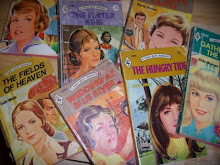I
Opusculum paedagogum.
The pears are not viols,
nudes or bottles.
They resemble nothing else.
II
They are yellow forms
Composed of curves
Bulging toward the base.
They are touched red.
III
They are not flat surfaces
Having curved outlines.
They are round
Tapering toward the top.
IV
In the way they are modeled
There are bits of blue.
A hard dry leaf hangs
From the stem.
VI
The shadows of the pears
Are blobs on the green cloth.
The pears are not seen
As the observer wills.
The Wallace Steven’s poem Study of two Pears is lo and behold about more than just a few pieces of fruit. Although the majority of it is describing just that, some pears, much more is being relayed to the reader. Steven’s consistent theme relating reality with imagination is especially prevalent here. What an artist does in using their imagination to display their perception of reality is a more distinct way of observing what everyone does. The pears described signify a portion of reality that can be viewed in many ways. What is it to see/know them for what they are in the purest sense? I think this is one of the prominent questions the poem implies. What may be implied is that this most accurate form of interpretation is not only difficult, but not necessarily even attainable in the cognitive human grasp.
There appear to be many layers suggested with the figures of the artist, poet, reader and so on. Given the pears themselves, at some point they are the most real they can possibly be in the physical realm at least. What this must be is having them directly in front of someone who experiences their blatant being first hand. If it is a painting that Stevens is writing about, then the artist of this work in a sense, while observing the pears in the most direct way, still may be said to not see them as he wills. With this I refer to the last line of the poem, “The pears are not seen as the observer wills.” The artist sees the pears as some more absolute causer of reality wills for them to be seen. Here we touch upon a more metaphysical study that may suggest something along the lines of Plato’s Forms, and other such theories for the causes of being. So, back to the frame of a frame thought I had concerning the observer’s will in seeing a thing… After the artist portrays his interpretation of the pears, there is now another way in which they may be seen. This painting (let’s call it) is not then viewed by the art gazers as they themselves wish it to be, but as the artist willed for them to be seen. And then along comes Stevens who takes this painting and creates his own new interpretation using poetry. Then I come into the picture and read this poem, not observing the pears as I will but as the most recent creator (Stevens) wills, as he is the one doing the describing. Perhaps we might even take it one step further using my presentation in front of an English class about this poem. I described to them my understanding of Steven’s work, and the images conjured up in their head are not as they will, but as I do putting my ideas into their heads.
I like that this poem, whether intended or not, could suggest such a puzzling set of seemingly connected meanings. It successfully provokes inquiry into the field of what is real, how we explain that which is real and what the significance of reality even is, if at all there is any. Surly there must be, as it is what we ourselves claim to be apart of. So how then does it come about? I continue to ponder along these lines initially brought on by pears, and wonder then what the actual impact of our imaginative perceptions are. The ripple effect is very much intertwined possibility with these notions. Like with the extended effects of the first creatively recorded observation from the artist (our supposed painting of the two pears), each and every mental creation and expression contributes to those that will follow it.



















No comments:
Post a Comment